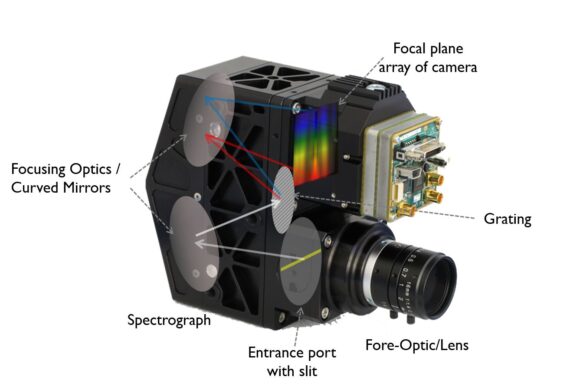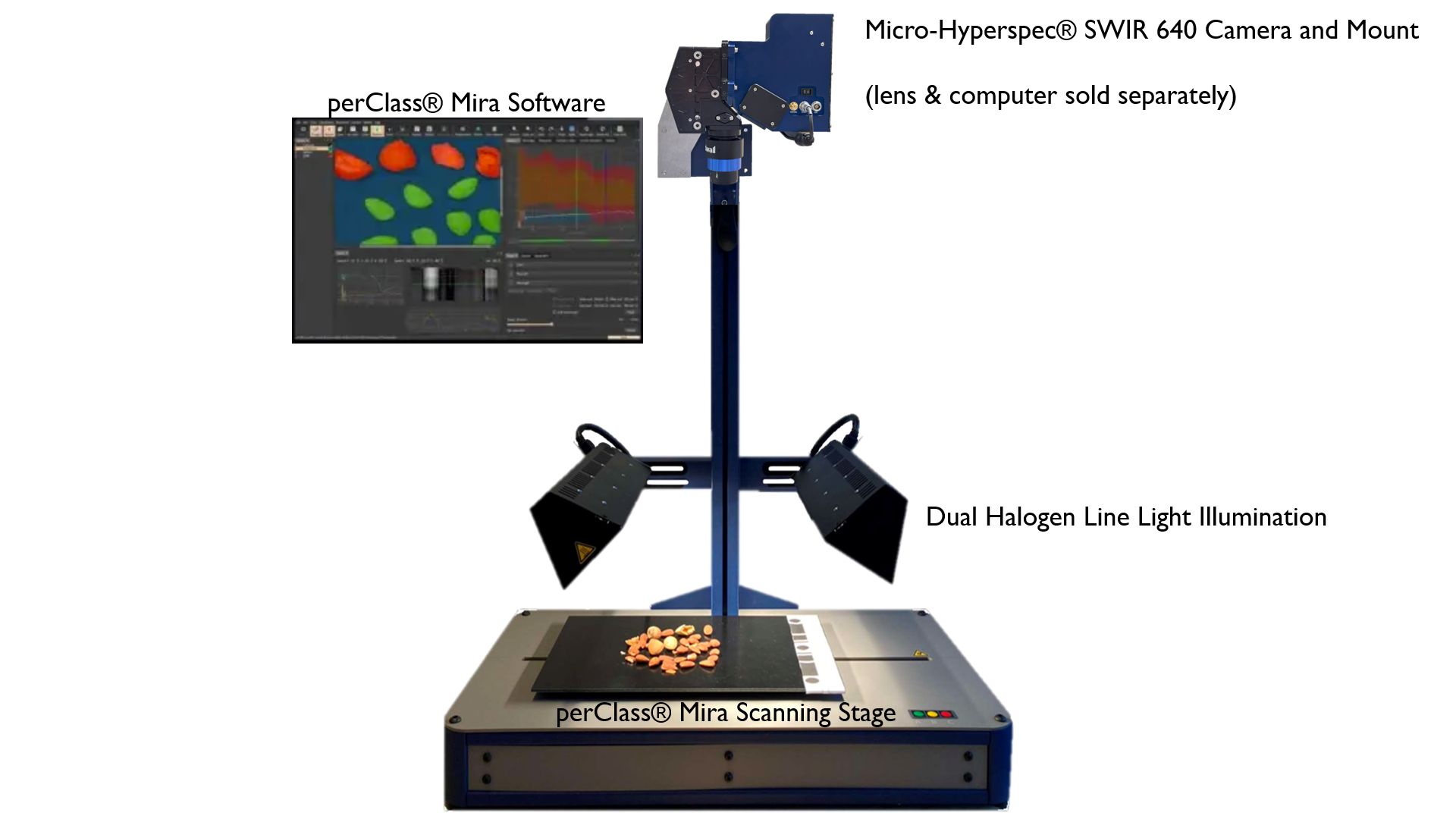Headwall Photonics’ SWIR Imaging Spectrometer systems are based on a Stirling-cooled Mercury Cadmium Telluride (also known as MCT or HgCdTe) sensor that has sensitivity in the 900-2500nm range. It is used by scientists and engineers to spectrally inspect samples in the 900-2500nm range, by generating HyperSpectral image datacubes with high spectral resolution AND high spatial resolution. A pushbroom hyperspectral imaging system inspects a field of view through a slit, relying on the relative motion of the sample past the camera to collect the required field of view.

As shown in the sketch and in the animation below, the field-of-view is imaged by the lens and a strip of light is captured through a narrow slit behind the lens. Light from each strip is dispersed by a diffraction grating across the focal plane of a camera, producing a (y, λ) image. As the sample moves past the camera a (y, λ) image is captured for each “x” position. Thus, every part of the field-of-view is scanned both spatially and spectrally and the resulting data is stacked by software into an (x, y, λ) data cube.
As described above, these scanners capture one line of spatial data at a time, moving across the scene to build a full image. This enables two types of use-cases:
- In conveyor belt type inspection systems and in airborne or satellite remote sensing the movement of the platform can be used to capture lines of spatial data along the trajectory of motion, offering high spatial and spectral resolution. For such applications a camera + lens and computer are all that are needed for a complete system.
- In laboratory research environments a perClass Mira® motorized stage and a pair of broadband light sources are typically added for a complete system. Samples are placed on the linear stage the operation of which is integrated within the perClass Mira® software platform. Users initiate and save scans with pushbutton ease-of-use, allowing them to interact with and gain insight from their sample data very quickly.
The cameras are c-mount compatible, which allows their use with a wide variety of camera lenses, selected to meet Field-of-View requirements of the application.
Users can select a lens with a focal length that allows them to achieve their Field-of-View requirements.
Headwall Photonics NIR cameras enable new types of applications sensing material composition. perClass Mira® software empowers users to interpret spectral images in minutes and create robust and accurate solutions. It enables sophisticated automatic classification and regression without requiring programming or machine learning expertise on the part of users. Its tight integration with the perClass Mira® stages (see tab for more information) makes it easy to deploy pushbroom hyperspectral imaging systems.
Host Interface: CameraLink (Base)
Choose either the Camera or a Camera System: [see Configuration dropdown]
- Micro-Hyperspec® SWIR 640 Camera [900-2500nm]
- MV.Scan SWIR 640 System [900-2500nm], comprising of camera, 2.8m CameraLink cable, perClass Mira stage and software (lens, CameraLink-PCIe board and MV.PC computer may be selected and added)





